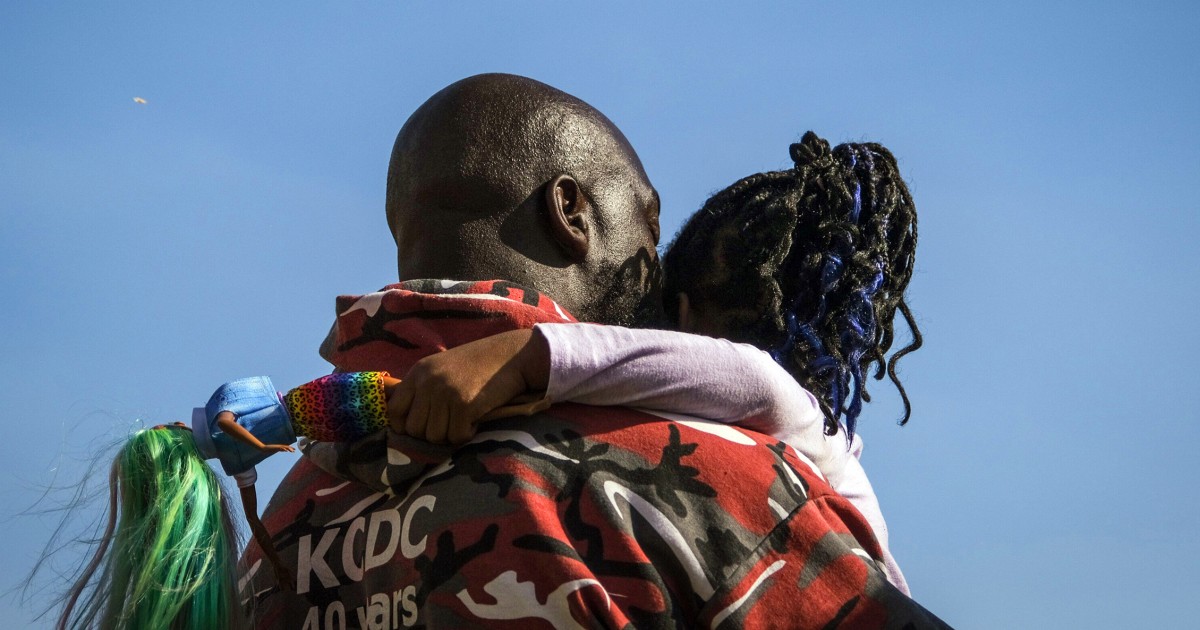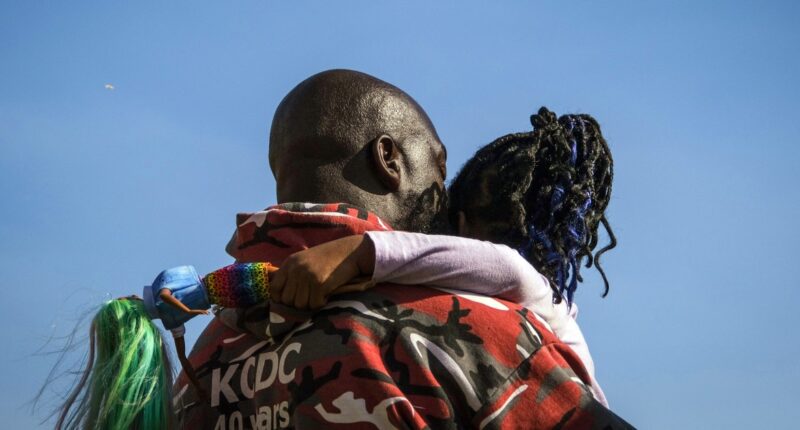
“This young man was trying to find his siblings,” said Alford Young Jr., the chair of the sociology department at the University of Michigan and father of two sons ages 24 and 20. “Some of the other young Black people who have been victims of violence were doing everyday things: walking, driving, jogging, playing in the park, bird-watching. What can you say other than ‘Don’t be a social being,’ which is impossible?”
Michael Bradley, of Chicago, said one day in January he arrived home in time to see two police officers standing in front of his 19-year-old son with their hands on their guns.
“I pull up and they turn to me, as if I was a threat,” Bradley said.
A white neighbor had called the police because they thought his son, who was home from college for the holidays, was stealing packages left outside houses, Bradley recalled.
“All he was doing was standing in front of the house, our house, on the phone,” Bradley said. “There were no packages in front of our door to steal. But because he was a young Black man, it was assumed he was a criminal. This has to stop. My son wasn’t doing anything. He was just standing in front of his house. And that’s reason for cops to be called — and for them to be ready to pull their weapons? How do we defend against this mark placed on us because we’re Black?”
Young called Yarl’s case “a new moment.”
“We’re challenged about precisely what to say to our young people given this,” he said. “I think about this as a societal issue. I think about it as a personal issue. And in both cases, you’re left with being unable to articulate an agenda for their survival. That’s another way of saying that ‘the talk’ has been ruptured, rendered almost untenable because how do you tell young men what they have to do just to survive, to exist in public space?”
Tamaira Johnson, a San Diego-area mother of 16- and 12-year-old sons, feels frustrated by “racism that will not go away.”
“This case is just sad, and it says that just by having Black skin our children are weaponized,” she said. “As a parent, in some ways I feel cheated out of the opportunity to give them a rosier outlook of what is out there once they get out of my shelter and out of my protection. But I don’t have any choice.”
Young also found it disturbing that in the Yarl case and those of others who were doing everyday life things, the claim of feeling threatened was used.
“It’s not even how they behave,” Young said. “It’s the mere presence of Black masculinity that is enabling people to argue they’re feeling threatened and acting with violence. And the self-defense policies and procedures give license to that. It’s almost as though policy now has made it possible for people to argue a sense of threat by one’s mere physical existence. But that’s only used against us — not by us.”
Andrea Boyles, an associate sociology and Africana studies professor at Tulane University, said the growing number of cases where Black people are victimized or have law enforcement called on them while doing seemingly harmless acts is a byproduct of American culture.
“It is the totality of anti-Black sentiments that are clearly being expressed around this nation,” Boyles said. “There’s no one place and there’s no one set of circumstances that triggers anything. Just being Black on sight gives way to criminalization, and the idea that white people are feeling very comfortable leveraging and applying what has now become a very racist script in saying, ‘I’m afraid.’ They know that that is an easy go-to defense to respond in deadly ways. This is why it’s not just happening with the police and why our young people do not feel like there are safe spaces to just live their lives.”
Yale University psychiatrist Terrell Holloway pointed to data published in the Journal of Child and Adolescent Trauma in 2021 that indicated Black youths are “more likely to report multiple ACEs,” or adverse childhood experiences “relative to their white counterparts.” And because of racism they experience potentially traumatic events, or PTE, and “their effects may be particularly harmful among Black youth given the relevance and impact of racism and racial discrimination.”
“What’s sad is that like when you think of post-traumatic stress disorder, it’s almost an overgeneralization that no place is safe, based off of a trauma that you had,” Holloway said. “But now basically existing while Black is so generalized that depending on the person and what your vulnerabilities are, and your strengths, it can be very disorienting and also can take a massive toll. It’s a really daunting duality of not only worrying about personal safety, but then as a parent worrying about your Black child’s existence as you recognize there is danger there when it shouldn’t be.”
Source: | This article originally belongs to Nbcnews.com










